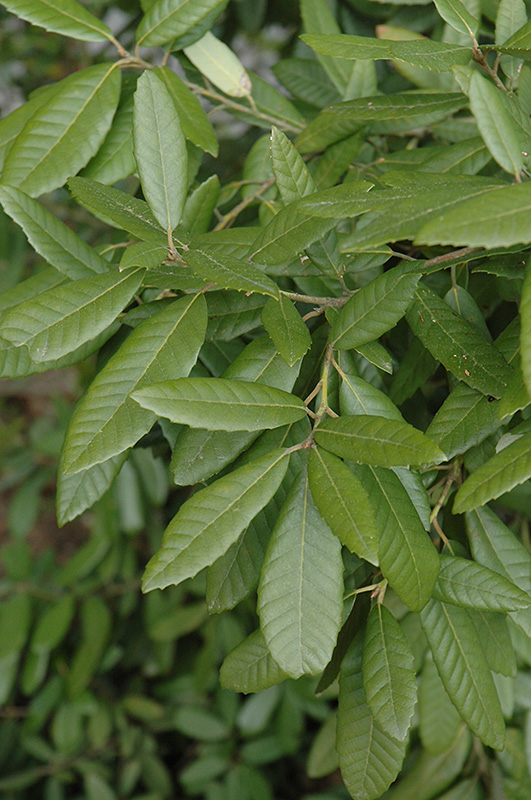Plant Finder
Height: 80 feet
Spread: 50 feet
Sunlight:
![]()
Hardiness Zone: 6b
Other Names: Tanoak
Description:
This American native makes a great shade tree; it has glossy, toothed leaves; flowers similar to a chestnut and acorns like an oak; the acorns take 2 seasons to mature; commercial species used for strong, hard wood; great at attracting wildlife
Ornamental Features
Tanbark Oak is primarily valued in the landscape for its ornamental upright and spreading habit of growth. It has rich green evergreen foliage. The serrated oval leaves remain green throughout the winter.
Landscape Attributes
Tanbark Oak is a multi-stemmed evergreen tree with an upright spreading habit of growth. Its relatively coarse texture can be used to stand it apart from other landscape plants with finer foliage.
This is a relatively low maintenance tree, and is best pruned in late winter once the threat of extreme cold has passed. It is a good choice for attracting birds, bees and squirrels to your yard. It has no significant negative characteristics.
Tanbark Oak is recommended for the following landscape applications;
- Shade
- Vertical Accent
- Hedges/Screening
- Windbreaks and Shelterbelts
- Naturalizing And Woodland Gardens
Planting & Growing
Tanbark Oak will grow to be about 80 feet tall at maturity, with a spread of 50 feet. It has a high canopy with a typical clearance of 5 feet from the ground, and should not be planted underneath power lines. It grows at a medium rate, and under ideal conditions can be expected to live to a ripe old age of 100 years or more; think of this as a heritage tree for future generations!
This tree should only be grown in full sunlight. It does best in average to evenly moist conditions, but will not tolerate standing water. It is not particular as to soil type or pH. It is somewhat tolerant of urban pollution. This species is native to parts of North America.





